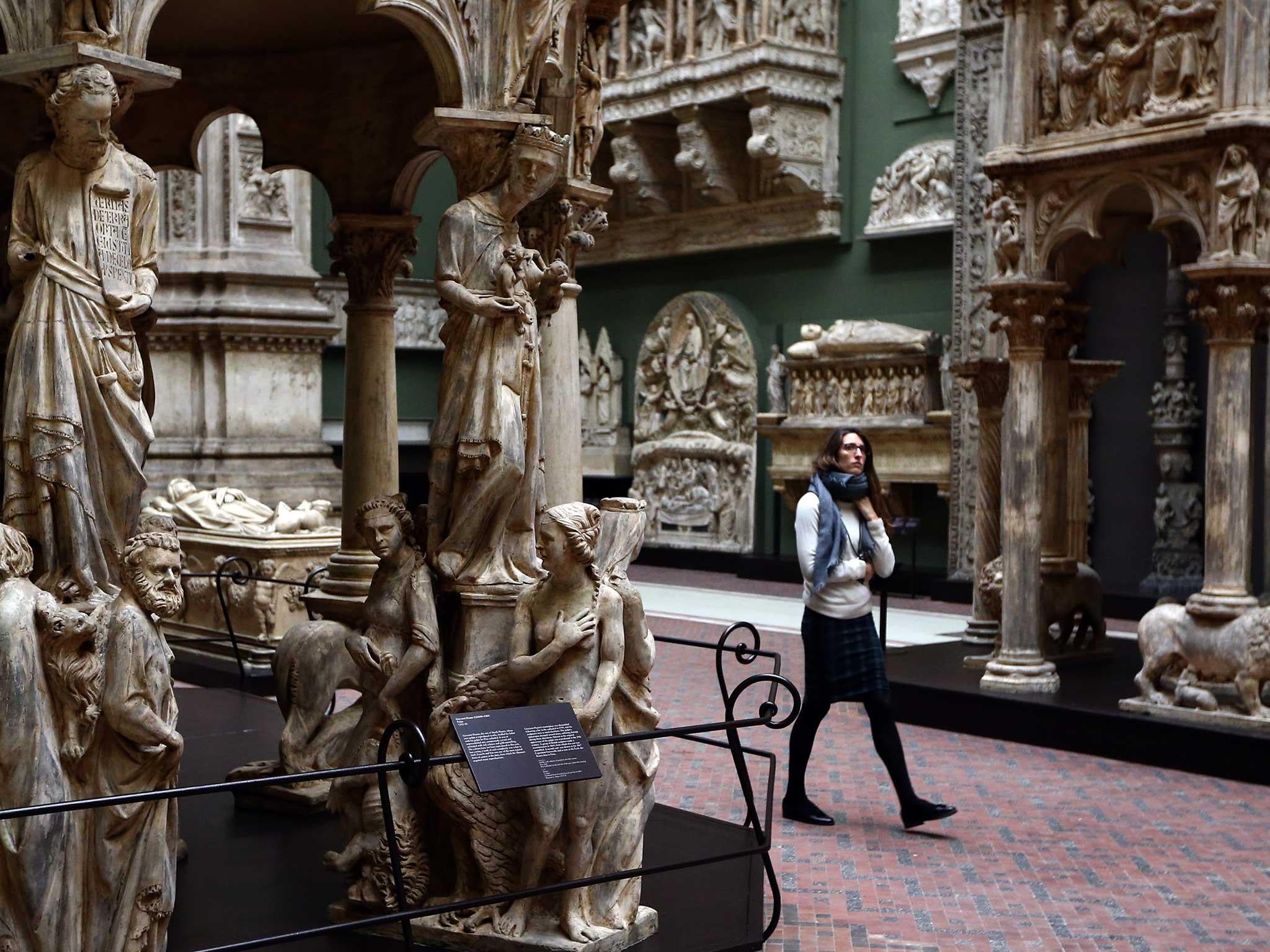Tristram Hunt to face questions over free museum entry as he takes up job as V&A director
The former Labour MP once said that free museum entry ‘didn't achieve that much’

Tristram Hunt, the V&A’s new director, will face questions over his position on free entry to museums after previously suggesting fees should be reinstated.
Visitor numbers shot up after the Labour government ended charges at England’s national museums in 2001, but Mr Hunt said “free entry didn’t achieve that much” and “the real work was done behind the scenes”.
Entrance fees to museums, including the V&A, were scrapped to make culture and heritage open to all.
Figures released on the 10th anniversary of the decision showed that visits to the V&A – where he will take charge – rose by 180 per cent, from about a million to 2.6 million.
But in an article in 2011, Mr Hunt, who is quitting his role as a Labour MP, suggested the Government should “begin to think about reintroducing charges for our national museums”.
If anywhere should have free entry, it should be the small, local museums, he argued, which, faced with cuts to local authority budgets, were “either closing... or ratcheting up charges”.
Mr Hunt wrote in The Guardian that the “metropolitan, club-class government has made sure that our global cultural icons are immune from the pressures hitting their regional colleagues”.
“While American tourists and continental mini-breakers have no problem paying... to wonder at the majesty of Lorenzetti in the Uffizi and to feast on Velazquez at the Prado, in London it is all gratis,” he wrote.
“At New York’s Metropolitan Museum of Art, there is a de facto 20 dollars entrance fee for adults, so why not a fiver for London’s great galleries? Would it really undermine our cultural competitiveness?”
He said schools and students should still get free entry and there should be a “free day a week reserved for residents”.
Mr Hunt’s appointment as director marks a turning point for the museum, one of the most famous in the world.
The former shadow education secretary has big shoes to fill, as his predecessor Martin Roth saw attendance triple during his five-year period in charge.
During the German’s tenure, the V&A staged hugely successful shows on David Bowie and Alexander McQueen and won the Museum of the Year award.
Mr Hunt, who is likely to enjoy a hefty pay rise with his move from Westminster to South Kensington, will oversee the development of V&A outposts in places such as Dundee.
Dundee’s V&A, designed by Japanese architect Kengo Kuma, was beset by delays and the doubling of costs to £80m before it was the subject of a rescue package with the Scottish Government.
The V&A is also launching a cultural space in China, a potentially massive market for the museum world.
Mr Hunt has spoken about his love for the V&A, where the collections span 2,000 years, “since I was a boy”, and has acknowledged that “it is a moment of transformation and renewal” for the museum, which was established in 1852.
Current shows include Undressed: A Brief History Of Underwear, while forthcoming exhibitions include a Pink Floyd retrospective.
The V&A is also continually adding to its collections. Recent acquisitions include six outfits worn by Baroness Thatcher donated by the former Prime Minister’s children.
The donation came months after the museum sparked controversy by initially turning down an informal offer of some of her outfits – it would still like to own one of her handbags.
Mr Roth announced he was stepping down in September after expressing his concern at the Brexit vote, saying it was “unknown” and felt like “skiing in very thick fog”.
The V&A recently tackled Brexit, asking 12 artists to “transform spaces” inside the venue on the subject of Europe.
Originally known as the Museum of Manufactures, it was renamed the Victoria and Albert Museum in 1899.
The museum was the world’s first to use gas lighting, to allow evening opening, which its first director, Sir Henry Cole, said he hoped “may furnish a powerful antidote to the gin palace”.
PA
Subscribe to Independent Premium to bookmark this article
Want to bookmark your favourite articles and stories to read or reference later? Start your Independent Premium subscription today.

Join our commenting forum
Join thought-provoking conversations, follow other Independent readers and see their replies